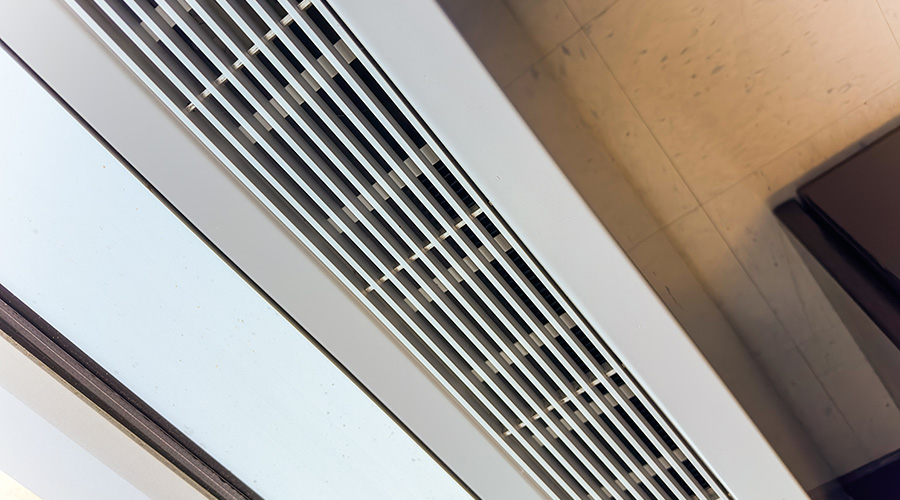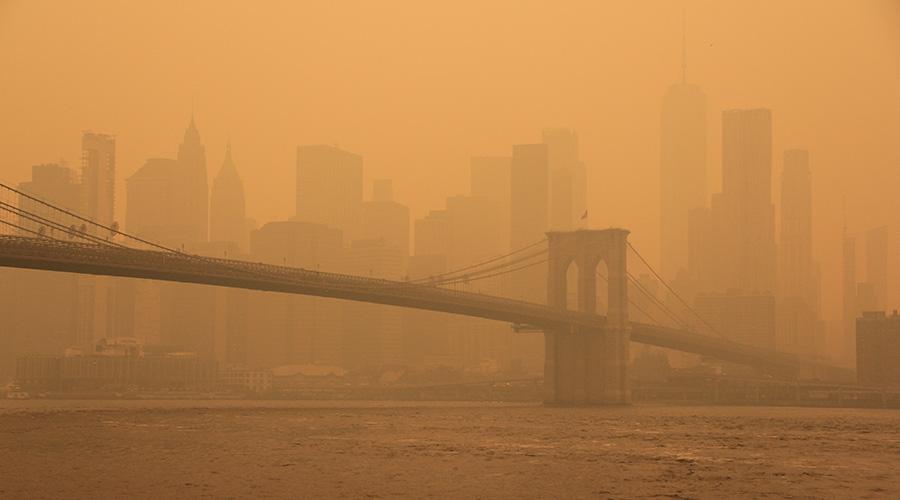 Poor indoor air quality in facilities such as schools can lead to immediate and long-term effects that include headaches, dizziness,respiratory diseases and cancer.
Poor indoor air quality in facilities such as schools can lead to immediate and long-term effects that include headaches, dizziness,respiratory diseases and cancer.IAQ: Introducing Outdoor Elements
Outdoor air introduced to a building can help to dilute common contaminants in a building's air flow.
The outside story
Outside fresh air is typically a manager’s friend when it comes to improving IAQ, although many areas of heavy commercial activity fall into one of the non-attainment areas designated by the U.S. Environmental Protection Agency (EPA): https://www3.epa.gov/airquality/greenbook/map/mapnpoll.pdf
Under environmental laws, a non-attainment area is considered to have air quality worse than the national ambient air quality standards as defined by the Clean Air Act Amendments of 1970. Outdoor air introduced to a building can help to dilute common contaminants, but it also can add contaminants, such as particulate matter, ozone and odors.
For the most part, outside air does not contain the same contaminants as indoor air and, as a result, helps dilute them. Managers concerned with the quality of outside air surrounding a building can schedule simple baseline testing to identify contaminants, including carbon monoxide, carbon dioxide, ground-level ozone, particulate matter, lead, sulfur dioxide and nitrogen dioxide. These contaminants and their maximum allowable concentrations can be found in AHSRAE 189.1. A local air sampling laboratory can walk managers through the process of obtaining and submitting these air samples, or managers can hire a third party to take baseline samples for indoor and outside air.
These samples also help give occupants basic information on the air they are breathing, and it can enhance their confidence that management is on top of the situation. If indoor or outside contaminants exceed recommended levels, potential strategies to clean the air can include air scrubbers, increased minimum efficiency reporting value (MERV) filtration, and a building flush-out.
Reviewing the operation and condition of our outside air intake dampers and their economizer operation also is important for maintaining IAQ with a focus on energy efficiency. Many times, these dampers have failed but have been overlooked, or they have fallen out of calibration and no longer provide the minimum required outside air. A quick mixed-air calculation can help managers approximate outside air intake percentage for comparison against a historical testing and balancing report:
Percentage of outside air = {(mixed air temperature – return air temperature) / (outside air temperature – return air temperature)} x 100
The most common method for determining required outside air rates adopted in building codes is the ventilation rate procedure (VRP) as defined in ASHRAE 62.1. This method is typically used for new construction, and ventilation rates are not required to be updated with existing systems as the codes and standards are updated. As a result, in an older facility, updating the system to reflect these values can have negative impacts on energy use and environmental control.
An alternative method allowable by ASHRAE is to assess required outside air ventilation using the IAQ procedure, which involves identifying contaminant sources and concentration, a mass balance analysis, and a perceived and subjective occupant analysis of IAQ. One low-cost measure to evaluate the IAQ involves surveying a panel of occupants per ASHRAE 62.1 to evaluate their perceived quality of indoor air.
In general, if 80 percent of occupants deems the space satisfactory, it passes the necessary evaluation. Occupants’ senses can detect many of the irritants that affect IAQ, allowing them to provide an evaluation to assist with the facilities baseline and ongoing operation. If the evaluation is not unsatisfactory, increasing outside air values, removing contaminants, and cleaning ducts and equipment can assist in raising the perceived level of IAQ.
Carbon dioxide is a common contaminant in heavily occupied spaces with different usage requirements. Per ASHRAE 62, a valid dynamical reset would involve either installing a demand ventilation control system to increase the airflow to the space or engaging an air cleaner based on an installed carbon dioxide sensor in the space.
Related Topics:














